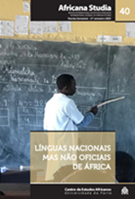Challenging the Myth of Language Homogeneity in the Somali Society
Abstract
Language is a critical tool for individual and collective identity. It is also a powerful Instrument of nation-building and national identity. For a long time, homogeneity has been presented as a prerequisite for better harmony and togetherness, which has made nations across the globe design language policies geared to wards harmonization at any cost. This was implemented the most by the imposition of language considered “national” in decisions made by political office holders who come from that particular language group and have a direct as sociation with it. So, social status and power interplay in the decisions. In their naïve wish or hidden interest, they have placed national unity through one language, religion, and culture as the only option. Historical accounts of many countries around the globe, including that of the Horn of Africa, where linguistic diversity is a dominant feature, are documented. This research presents the shadowed sociolinguistic diversity in the Somali language coated by the persistently narrated linguistic homogeneity of Somali language-speaking communities. The article states that linguistic diversity, both in dialectical variation and the presence of minority languages, is an attested reality in the Somali language, which demands practical policy and implementation strategies to ensure social justice and inclusivity.
Keywords: National languages, Somalia, Language Policies.
Downloads
Downloads
Published
How to Cite
Issue
Section
License
Copyright (c) 2024 Africana Studia

This work is licensed under a Creative Commons Attribution-NonCommercial 4.0 International License.
Copyrights of all published material belong to Africana Studia.
Original images supplied by authors will be returned to them if requested


